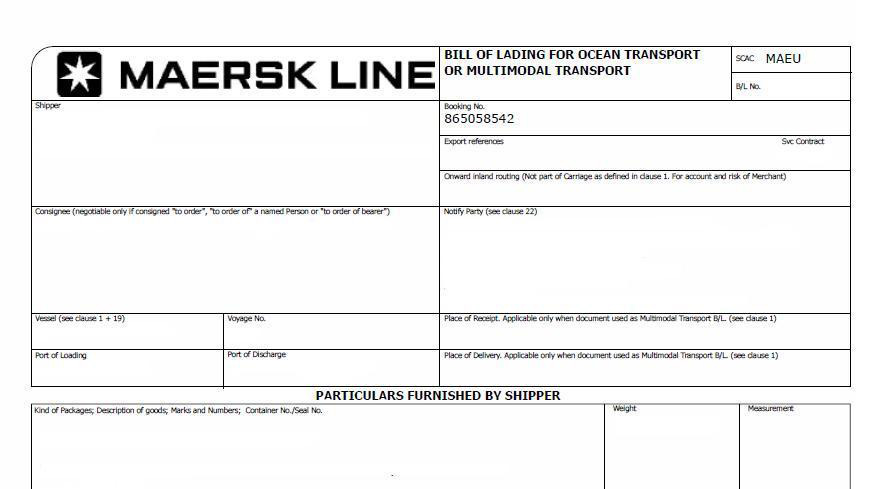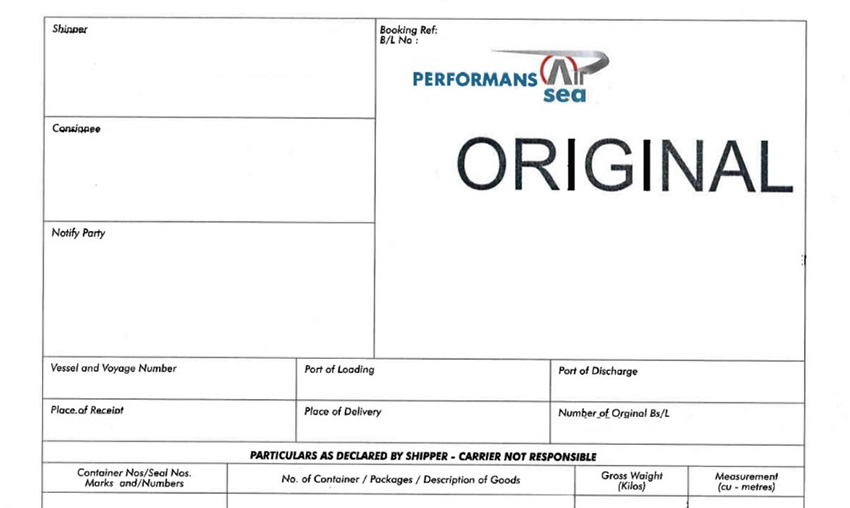A Bill of Lading (BOL) is a crucial document in international shipping, with two primary types in ocean freight that serve as proof of shipment. It details the shipped goods, their origin, and their destination country.
Here is a quick guide breaking down the differences between a House Bill of Lading and a Master Bill of Lading, including when to use each.
What is a Master Bill of Lading?
A Master Bill of Lading (MBL) is issued by the ship’s owner or operator, also known as the carrier. This document represents the freight contract between the shipper, who owns the goods, and the freight carrier, who arranges the transportation.
Typically, a shipper will only receive an MBL when working directly with a mainline carrier or through a freight forwarder.
The Master Bill of Lading is highly reliable in ocean transport because it is officially printed and signed by the carrier. Once the freight carrier has confirmed the cargo received, the MBL is sent to the entity (shipper) that manages the shipment booking.
What is a House Bill of Lading?
A House Bill of Lading (HBL) is a document signed by an NVOCC or a freight forwarder to a shipper to verify receipt of the shipment.
In the House Bill of Lading, the shipper is typically the actual customer or exporter of the goods. They hire freight forwarders or NVOCCs to arrange transportation to a foreign destination. The forwarder or NVOCC then books cargo space with the carriers.
Additionally, the consignee on the House B/L is the receiver or importer of the goods. The notify party may be the same as the consignee or another designated party.
A practical case of how HBL and MBL work
Exporting Company A needs to ship eight crates of clothes from China to the United States. They submit a request to Airsupply, a trusted freight forwarding company in China, to handle the shipment.
Airsupply collects the crates from Exporting Company A’s warehouse and issues a House Bill of Lading (HBL) to confirm receipt of the goods.
Next, Airsupply compares rates and availability of various carriers and selects Carrier X to transport the shipment to the USA.
However, they also find Carrier X is the right option to deliver cargo from other shippers to the USA, such as six boxes of phone cases from Exporting Company B and four pallets of plastic cable from Exporting Company C.
Since all three shipments are destined for the USA, Carrier X can pick them up from Airsupply and consolidate them.
Instead of issuing three unique bills of lading, Carrier X releases a single Master Bill of Lading (MBL) to Airsupply. This MBL is a receipt confirming the pickup of all goods for delivery and a contract for their carriage.
Master Bill of Lading vs House Bill of Lading
Similarities between House and Master Bills of Lading
HBL and MBL are similar in the information they provide and their purpose. Both documents are a type of Bill Of Lading that serves as a receipt, a contract of carriage, and a title for the shipped goods.
Moreover, the House Bill Of Lading and Master Bill Of Lading all contain details about the shipments, such as the cargo weight, measurements, number of containers, seal numbers, etc.
Difference between House and Master Bill of Lading
1. Issuer
As mentioned above, the carrier or shipping line, such as Maersk, EMC, MSC, or other VOCCs, issues an MBL directly.
Conversely, a freight forwarder or an NVOCC acts as an intermediary to organize shipments for individuals or corporations and release an HBL accordingly.
But in the US, freight forwarders must be registered as NVOCCs to sign Bills of Lading.
2. Bill of Lading number
Another distinction between the Master Bill of Lading and the House Bill of Lading is the Bill of Lading number. The MBL shows the carrier’s BOL number, while the HBL displays the forwarding company’s.
3. Contractual parties
In a Master BOL, the contractual parties are the shipping line and the freight forwarder or NVOCC.
In contrast, a House BOL involves the shipper (the entity shipping the goods) and the consignee (the person receiving the cargo), with the freight forwarder acting as an intermediary.
4. Use in shipment consolidation
HBL and MBL are vital in freight consolidation. When multiple smaller shipments are combined into one larger shipment, the Master B/L covers the entire consolidated shipment.
On the other hand, individual House B/Ls are for each smaller shipment within the consolidation.
Examples of House BOL and Master BOL
While variations exist globally, a typical format of a MBL and HBL resembles the following illustration:


House and Master Bill of Lading: Pick the right one
For shippers and consignees alike, understanding the differences between MBL and HBL empowers informed decision-making. These documents play a significant role in determining operational responsibilities and managing documentation throughout the supply chain.
At Airsupply, we arrange both house and master bills of lading and assist with all necessary documentation for your shipments. Furthermore, our comprehensive logistics solutions streamline the entire process, encompassing customs clearance, last-mile delivery, cargo insurance, warehousing, and more.




